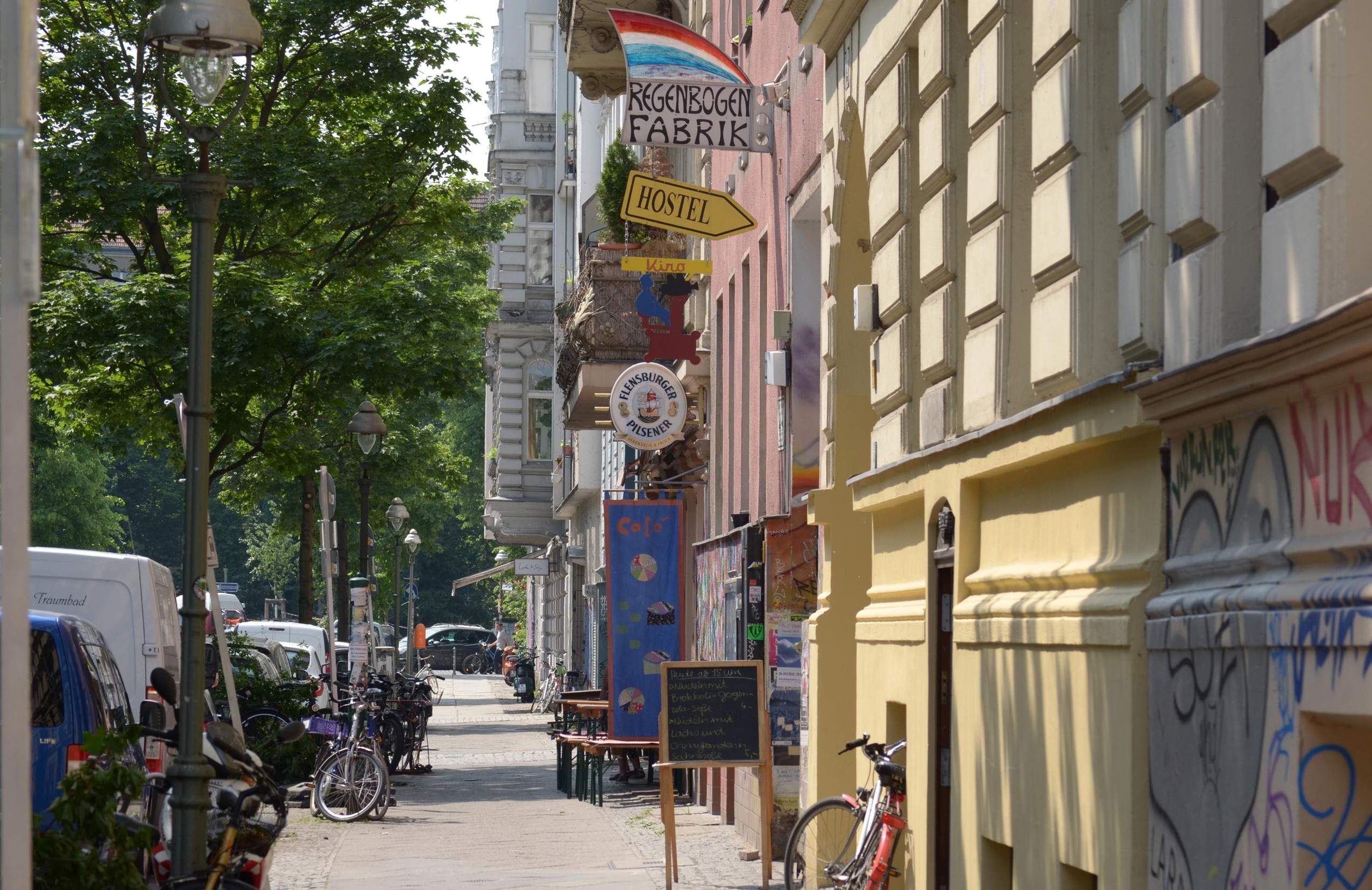Samariterviertel: Small but mighty
The Samariterviertel neighbourhood in Friedrichshain is a small neighbourhood with a big history. It was once home to farmers who worked the surrounding fields and later to labourers who toiled in the factories. Today, the Samariterviertel is a popular residential area for young families, students and creative types who appreciate the colourful and lively flair.
But this comes at a price: the Samariterviertel is the third most densely populated neighbourhood in Berlin. A good 31 hectares are packed with 10,138 people, or 32,657 per square kilometre. By comparison, the Berlin average is 4,090 inhabitants per square kilometre.
The Samariterviertel is famous for the Samariterkirche church, the renowned Heinrich-Hertz-Gymnasium grammar school and the Samariterstraße underground station, which, like many of the buildings here, is a listed building.
Helmholtzkiez: Between heaven and earth
The Helmholtzkiez in Prenzlauer Berg is the second most densely populated neighbourhood in Berlin. It lies diagonally opposite the Samariterviertel neighbourhood, separated by the huge intersection of Prenzlauer Allee and Danziger Straße. These two streets also form the southern and eastern boundaries of the neighbourhood, which is bordered to the north by the S-Bahn trench. The western part is part of Dunckerkiez, which is somewhat less densely populated.
In Helmholtzkiez, 7,561 people live on 22 hectares, or 34,399 per square kilometre. Most of them live in renovated Wilhelminian-style buildings. The streets are narrow and parking spaces are scarce, but the street trees provide greenery. If you need more of it, you can take a walk to Helmholtzplatz or Thälmannpark, both of which offer beautiful green spaces and playgrounds. If you want to see more of the sky, you can visit the Zeiss-Großplanetarium, which is a landmark of the neighbourhood with its silver dome.
Helmholtzkiez is a neighbourhood with charm and character. The street names are reminiscent of the Baltic Sea islands of Hiddensee, Göhren and Stubbenkammer, which many Berliners love as holiday destinations. The neighbourhood is also known for its cafés, bars, restaurants and shops, which offer something for every taste.
Winsviertel: The front runner
The Winsviertel in Prenzlauer Berg is the most densely populated neighbourhood in Berlin - and by far. 8,445 people live here on 23.3 hectares, or 36,291 per square kilometre. That's almost nine times the Berlin average. If the whole of Berlin were as populated as this northern part of the Winsviertel, the city would have 32 million inhabitants!
The Winsviertel is located between Greifswalder Strasse, Danziger Strasse, Marienburger Strasse and Prenzlauer Allee. It is a typical Prenzlauer Berg neighbourhood with many old buildings that have been extensively renovated in recent years. Rents are high and demand is high. Many young families, academics and artists live here and enjoy the urban and cultural life. However, the Winsviertel also has its green side, so you can go to Volkspark Friedrichshain or Mauerpark, both of which are just a stone's throw away.
And by the way, the whole of Prenzlauer Berg has a population density of 15,422 inhabitants per square kilometre, while Marzahn has a population density of 6,029 inhabitants per square kilometre. Prenzlauer Berg is therefore much more densely populated than Marzahn.

